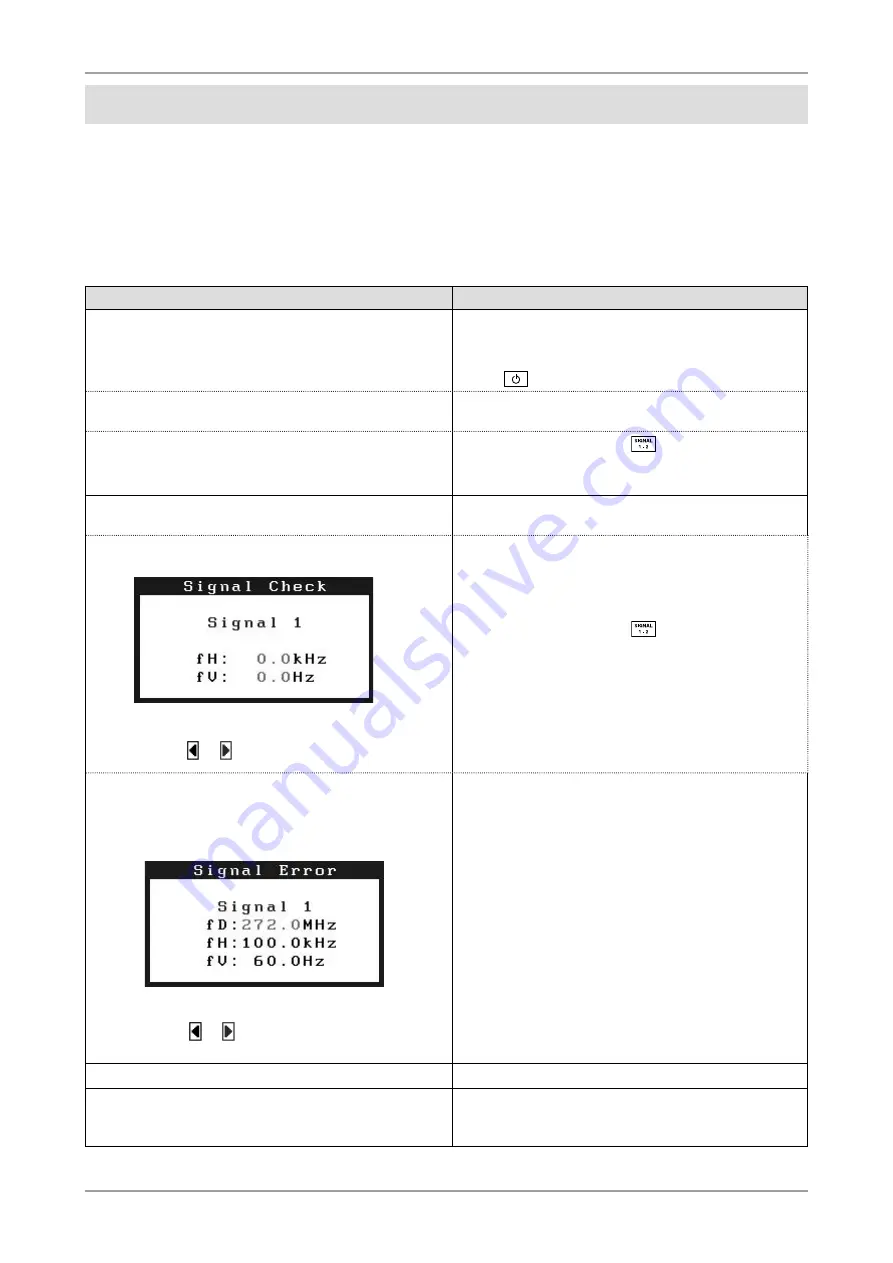
4. Troubleshooting
.Troubleshooting
If a problem still remains after applying the suggested remedies, contact your local dealer.
• No-picture problems : See No.1 - No.2
• Imaging problems : See No.3 - No.9
• Other problems : See No.10 - No.12
• USB problems : See No.13 - No.14
Problems
Possible cause and remedy
1. No picture
•
Power indicator does not light.
•
Check whether the power cord is connected correctly. If
the problem persists, turn off the monitor, and then turn
it on again a few minutes later.
•
Press
.
•
Power indicator is lighting blue.
•
Set each RGB adjusting value in <Gain> to higher
level.(page 17).
•
Power indicator is lighting orange.
•
Switch the input signal with
.
•
Operate the mouse or keyboard.
•
Turn on the PC.
2. The message below appears.
This message appears when the signal is not input
correctly even when the monitor functions properly.
•
This message appears when no signal is input.
(This is displayed for about 40 seconds)
•
The message shown left may appear, because some
PCs do not output the signal soon after power-on.
•
Check whether the PC is turned on.
•
Check whether the signal cable is connected properly.
•
Switch the input signal with
.
•
The message below shows that the input signal is out of
the specified frequency range. (Such signal frequency is
displayed in red.)
Example:
•
Reboot the PC.
•
Select an appropriate display mode using the graphics
board’s utility. Refer to the manual of the graphics board
for details.
3. Characters are blurred.
•
Adjust using <Smoothing> (page 20).
4.The screen is too bright or too dark.
•
Adjust <Brightness>. (The LCD monitor backlight has a
fixed life span. When the screen becomes dark or begins
to flicker, contact your local dealer.)
*
*
*
In Dual Display mode, the display of the error message
is shown by or .
*
In Dual Display mode, the display of the error message
is shown by or .

























